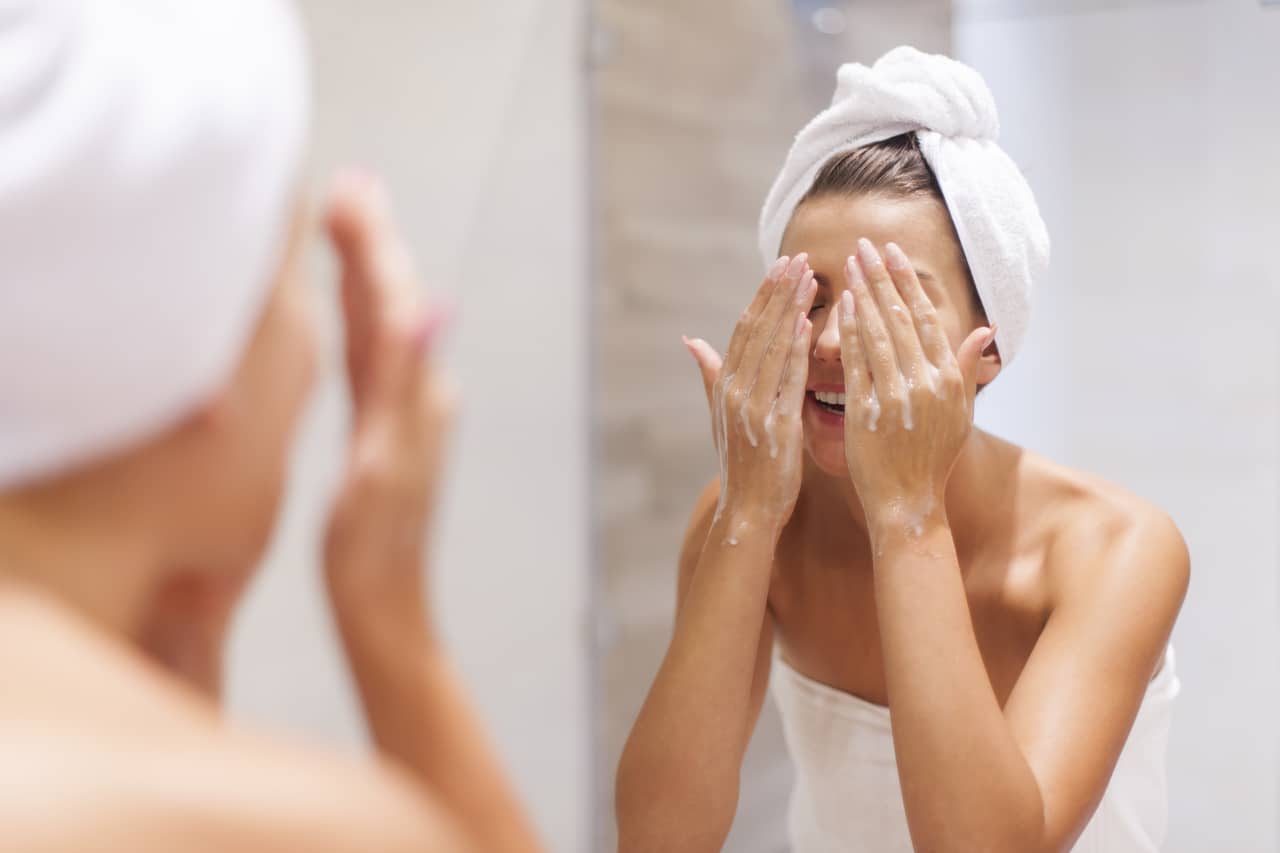After pregnancy, you notice changes in the mirror first, not in calendars. Sleepless nights and hormones leave marks. Skin feels drier, less tight, with tiny lines around the eyes or soft ridges underneath. Cheeks appear flatter, and under-eye shadows become darker. This happens to most women and gets them wondering how to restore that fresh look.
There isn’t one single fix that works for everyone. Caring for your skin after having a baby means combining daily habits with products that work. Sometimes treatments help. You may want to consider dermal fillers, although there are other options worth trying as well.
In This Article
Basics That Work
It’s usually the small habits that add up. Keep water handy during nursing, as hydration helps make the skin look plumper. Eating protein, vegetables, and healthy fats provides your body with the materials it needs for self-repair and maintenance.
Pregnancy makes skin sun-sensitive. Applying sunscreen each morning helps prevent dark patches from worsening and reduces the formation of new creases. Gentle cleansers beat harsh ones, which strip moisture when skin struggles.
Sleep feels impossible with newborns. Nights get interrupted, but 20-minute naps control stress hormones that deepen lines. It won’t solve every concern, but it helps the skin feel steadier while it recovers. Even brief moments of rest also lift mood and patience, which makes the whole recovery process feel a little easier to manage.
What Moms Try First
Moisturizers are where people start. Creams with shea butter, ceramides, or natural oils tackle dry spots. Vitamin C serums brighten uneven tone. Skip retinoids while breastfeeding, but bakuchiol works similarly and is plant-based.
Oil massages are popular. They hydrate skin and boost circulation. Something calming about taking a few minutes for this. Regular practice makes the skin feel more relaxed.
When Creams Don’t Work
Sometimes creams aren’t enough. Light peels smooth rough texture. Microneedling helps the skin make more collagen. Laser treatments work on redness or dark spots. Facial massages or lymphatic drainage reduce puffiness and add glow.
Not everything works while nursing, and everyone heals differently. Talk with therapists or specialists before trying new treatments.
About Dermal Fillers
Most women won’t think about fillers right after having babies, but knowing about them helps. They’re soft gels placed under the skin to restore volume or smooth certain areas. Most use hyaluronic acid fillers, which our bodies make to hold water and keep tissues soft.
Different types do different jobs. Some plump lips, others lift cheeks or fill hollow spots under the eyes. They sharpen jawlines, add structure to chins, or work on foreheads, temples, and hands.
Dermal fillers fade over time. Effects last anywhere from months to over a year, depending on the type and location. Since they fade slowly, changes can be made later. Many mothers like this because looks can change gradually instead of staying frozen.
To give an idea of what that looks like in practice, a small 2025 study followed women who tried hyaluronic acid fillers for midface hollows, the chin, or jawline softening. The results held steady through a full year, with contours looking firmer and more defined. What stood out most was that participants said the changes felt natural and never overdone. Side effects remained mild and short-lived, which gave women confidence that fillers can be safely integrated into everyday life when administered by trained professionals.
This kind of evidence helps explain why fillers remain on the radar for new moms exploring gentle, non-surgical ways to feel more like themselves again.
Safety Stuff
Safe dermal fillers after pregnancy aren’t recommended while pregnant or nursing. After that phase ends, they could be part of post-pregnancy skincare routines.
Safety depends on who does them. Therapists who specialize in injectables review medical history, check for allergies, and assess for potential bleeding problems. Side effects are usually mild, including redness, swelling, or bruising that typically subside within a few days.
Planning ahead helps. Women book appointments weeks before big events so skin settles naturally. In the U.S., some fillers have FDA approval, so women can feel more confident that these options meet strict safety standards.
Why Some Mothers Choose Them
For women, the appeal is straightforward: convenience. Appointments are quick, downtime is minimal, and fillers move with facial expressions rather than creating frozen looks. They’re not permanent, so changes can happen over time, which mothers find reassuring.
Balancing kids and self-care is tough, so subtle results and practicality explain why fillers stay popular in non-surgical skin rejuvenation options. The natural-looking results work with busy schedules.
Other Approaches To Try
Long-lasting dermal fillers are just one route. Many women continue to rely on creams, serums, and massage as their primary approach. Bakuchiol creams substitute for retinoids well. Some women try mesotherapy, where tiny injections of vitamins or hyaluronic acid add extra hydration. Massage with nourishing oils remains one of the simplest and most relaxing options. It also doubles as a small act of self-care at home, giving women a chance to pause and focus on themselves in the middle of busy days.
One method works fine, or several can be mixed together. What matters is finding something sustainable day after day. Dermal fillers for healthy skin complement other methods meant to restore volume and hydration.
Finding What Works
Everyone’s recovery looks different. Some women start exploring treatments after a few months, others wait years, and some prefer staying with home care entirely. All paths make sense.
Getting clear advice helps. Licensed therapists can explain what’s safe and what kind of results to expect. One woman might find daily skincare and sunscreen completely adequate, while another might decide that dermal fillers give her a look that feels authentic. The right choice is whatever feels comfortable and fits into life.
Conclusion
Life with kids changes so much, including how women feel about their skin. Post-pregnancy care isn’t about trying to look perfect — it’s more about small steps that make you feel comfortable in your own body again.
Some women are happy with creams and oils, while others look into gentle treatments. Dermal fillers can be part of that mix, giving a little lift when it’s wanted. The best choice is always the one that feels right for you and fits into the everyday chaos of family life.











